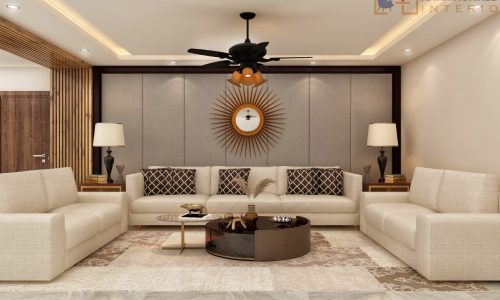
Commercial interior designers play a crucial role in creating impactful environments that transform spaces into functional and aesthetically pleasing areas. They have the expertise to bring life and purpose to commercial settings such as offices, retail stores, restaurants, and resorts. By understanding the needs and goals of the clients, these designers turn ordinary spaces into extraordinary places that leave a lasting impression on the people who visit them.
One of the key aspects of commercial interior design is maximizing the functionality of a space. Commercial spaces have specific requirements that need to be taken into consideration, such as traffic flow, space utilization, and accessibility. Interior designers analyze the space and develop a design plan that optimizes the layout to ensure smooth operations and efficient use of the area. This involves carefully selecting furniture, fixtures, and equipment that not only serve their practical purpose but also contribute to the overall aesthetic of the space.
In addition to functionality, commercial interior designers also focus on creating an appealing and engaging environment that reflects the brand and vision of the business. They work closely with their clients to understand their brand identity, target audience, and goals. Based on this information, they develop an interior design concept that aligns with the client's vision and resonates with their target market. Whether it's a modern and sleek office space or a warm and inviting restaurant, commercial interior designers use color schemes, textures, lighting, and other design elements to create an atmosphere that evokes the desired emotions and impressions.
Another important aspect of commercial interior design is incorporating sustainability and green design principles. With increasing environmental awareness, many businesses are now looking to create spaces that are environmentally friendly and energy-efficient. Commercial interior designers have the knowledge and expertise to integrate sustainable practices and materials into their designs. They consider factors such as natural light, energy-efficient lighting systems, recycled materials, and proper waste management to create spaces that not only look good but also have a minimal impact on the environment.
Commercial interiors can also have a significant impact on the productivity and well-being of the people who work or visit these spaces. The design of an office, for example, can greatly influence the mood, motivation, and efficiency of employees. Commercial interior designers take into account factors such as ergonomics, comfort, and acoustics to create spaces that promote productivity, creativity, and overall well-being. From choosing ergonomic furniture and adjustable workstations to incorporating natural elements and creating designated break areas, these designers create environments that enhance the overall experience of the people who occupy these spaces.
Finally, commercial interior designers are also well-versed in the latest technology and trends in the industry. They stay updated with advancements in lighting systems, audiovisual technology, smart systems, and other innovative solutions that can enhance the functionality and aesthetics of commercial spaces. By incorporating these technologies into their designs, they create spaces that are not only visually appealing but also technologically advanced and future-proof.
In conclusion, commercial interior designers have the expertise and skills to create impactful environments that transform spaces and leave a lasting impression. Through their understanding of functionality, branding, sustainability, well-being, and technology, these designers bring life and purpose to commercial settings. Their attention to detail and ability to create unique and engaging environments make them an essential part of any commercial design project.